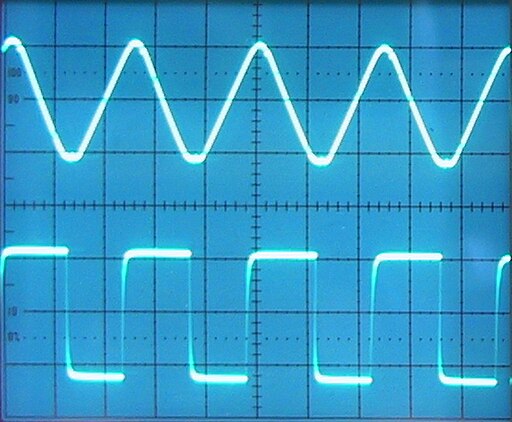In the realm of engineering and signal analysis, understanding waveforms and how to calculate them is critical. Waveforms come in various shapes and sizes, each carrying its unique characteristics. To gain a deeper insight into these signals, engineers often employ the concept of average value. This value provides a measure of the signal’s intensity or strength. In this post, we’ll dive into the variety of formulas for finding the average values for various waveforms.
The average value of a waveform represents its “center of mass” or “balance point.” It provides information about the signal’s overall intensity or strength. Let’s explore how to calculate the average value for different types of waveforms.

Continuous DC (Direct Current) Signal
The average value of a DC signal is essential in applications like power supplies and battery management systems, where maintaining a stable voltage level is critical. A continuous DC signal maintains a constant value over time, making its average value straightforward to determine using the formula:
Vavg = Vdc
In this formula, “Vavg” represents the average value while “Vdc” corresponds to the constant value of the DC signal.
Sinusoidal AC (Alternating Current) Signal
In AC power systems, understanding the average voltage or current level is crucial for determining the power consumption of electrical devices. AC signals display an oscillatory behavior, necessitating a more nuanced approach to calculate the average value. Over one complete cycle, the average value of a sinusoidal AC signal is zero due to its symmetrical nature. However, you can find the average value over a portion of the waveform using the following formula:
Vavg = (2 / π) * Vm
Here, the average value over a portion of the sinusoidal waveform is indicated by “Vavg”, while “Vm” represents the maximum amplitude of the sinusoidal waveform.
Periodic Pulse (Square Wave) Signal
Square waves are commonly found in digital electronics, where the duty cycle determines the behavior of digital logic circuits. Periodic pulse signals, like square waves, have equal positive and negative levels. Calculating their average value is relatively straightforward:
Vavg = (Duty Cycle) * (Amplitude)
In this formula, “Vavg” denotes the average value, while “Duty Cycle” refers to the ratio of time the signal is at the high level to the total time of one period. “Amplitude” is the magnitude of the high level.

Triangular Waveform
Triangular waveforms are often encountered in applications such as signal generation and modulation, and their distinctive shape is created because they vary linearly between two extremes. To find their average value, use the following formula:
Vavg = (1/2) * (Amplitude)
Where “Vavg” is the average value, and “Amplitude” denotes the peak-to-peak amplitude of the triangular waveform.
Sawtooth Waveform
Sawtooth waveforms are used in various applications, including the time base generators in oscilloscopes. These waveforms linearly rise from a minimum to a maximum, and then abruptly drop to the minimum. Their average value can be calculated as follows:
Vavg = (1/2) * (Amplitude)
Where “Vavg” is the average value, and “Amplitude” represents the peak amplitude of the sawtooth waveform.
Understanding average values is fundamental in various applications, including electronics, power distribution, signal processing, and beyond. These values provide valuable insights into the behavior and characteristics of different waveforms, aiding in the design and analysis of electrical systems. Whether you’re working with continuous DC signals, sinusoidal AC waves, periodic pulses, or unique waveforms like triangle and sawtooth, calculating the average value helps you make informed decisions in your engineering endeavors.







